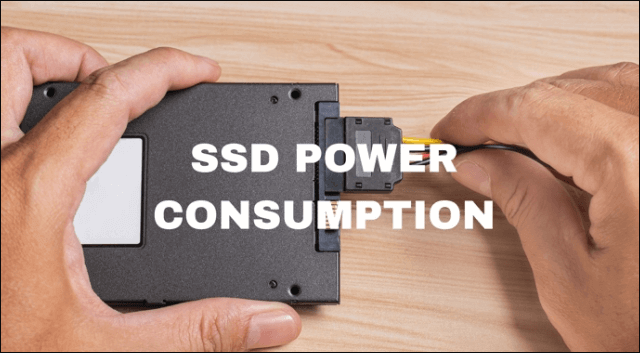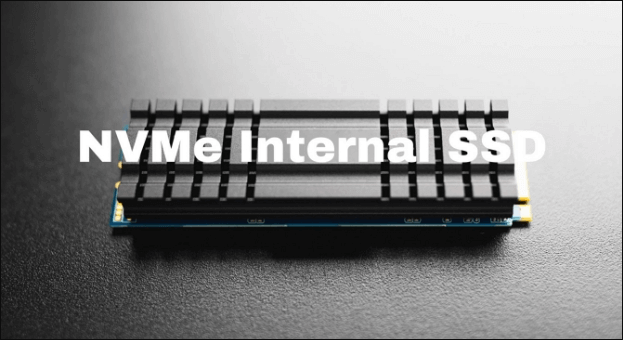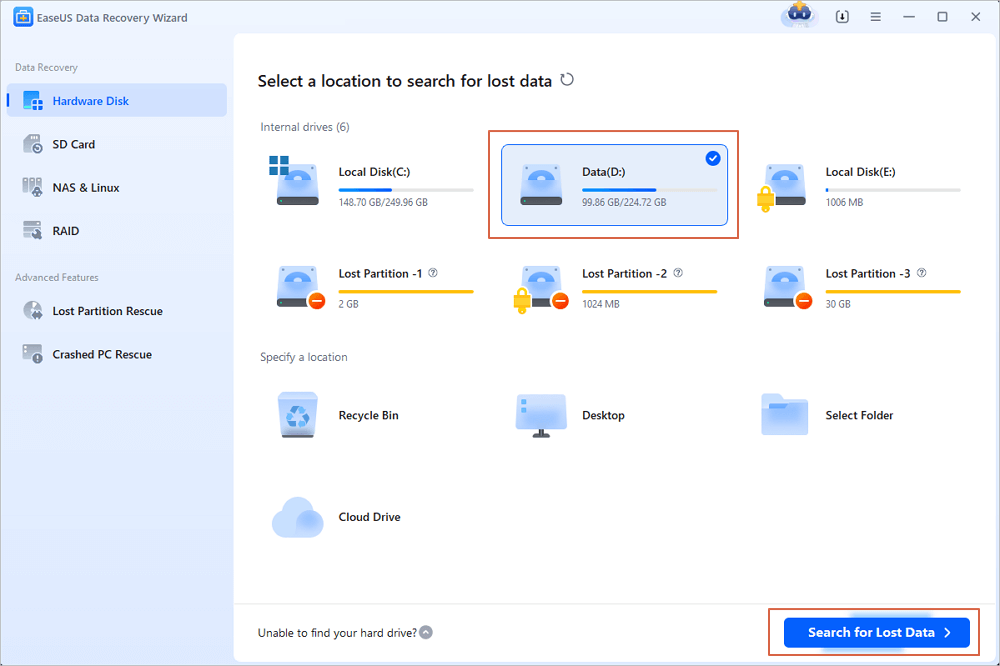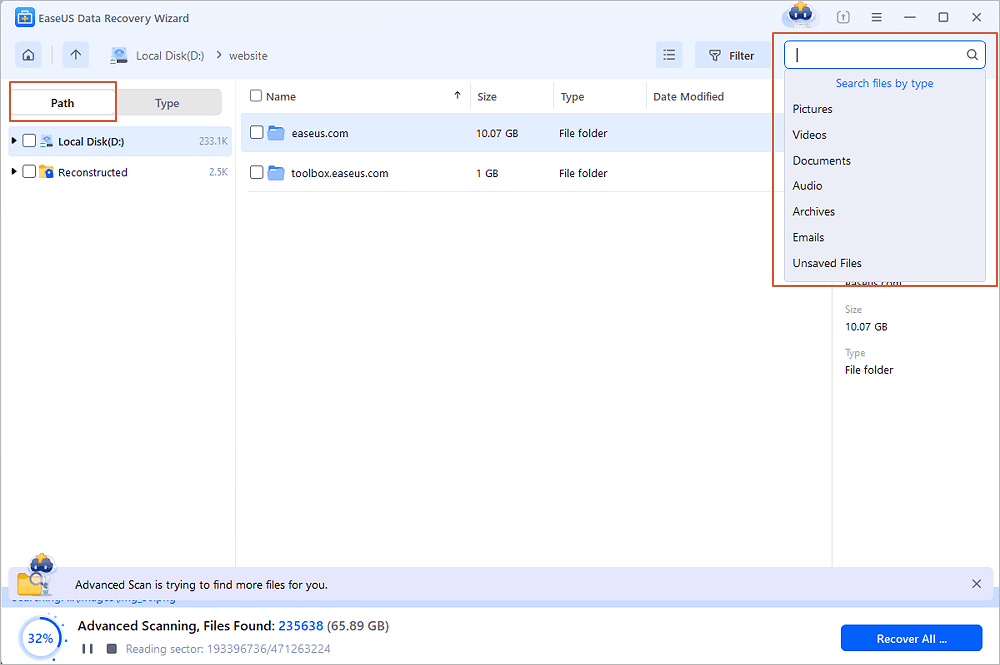Featured Articles
Solid-state drives, also popularly known as SSD, signify a novel, long-anticipated era in storage technology. Undoubtedly, SDDs are currently one of the most popular storage options. Why so? It's because SSDS are hardy, faster, and have greater storage-per-inch capability than any other HHD components. Undoubtedly, SSDs are the future of storage media, but the question frequently arises: Does SSD need the power to retain data? To know the answer, follow this post till the end. Here in this post, we will give you a clear and in-depth analysis regarding SSDs, how it works, and relevant things.
Does an External SSD Need Power
Before explaining whether an external SSD needs power, it's essential to understand that SSDs are technology-based electronic components, which require electric circuitry power to function. So, when it comes to power supply, it may vary and depend on the type of SSD you consider.

An external SSD requires less power, and USB ports can provide that much power to external SSDs. All USB ports are specially designed to have four minimum contacts on board. Let's consider the old method in which the system users would buy a separate HDD and place it for any special function.
The HDD inside the case still requires a power source. But with HDDs, the scenario is different. Usually, they have been available in a 2.5 form factor which develops differences in external drives and external SSDs. In such conditions, SSD offers advantages.
When it comes to SSDs, these are usually two types external and internal. External SSDs are portable because of their compactness which generally consumes less power to function than external SSDs. On the other hand, internal SSDs are specially designed for installing onboard your system, which usually consumes more power to function correctly.
Does an Internal SSD Need Power
Whether it's an external or internal SSD, these are technology-based electric components, which means they will need electric power anyways to function and utilize. Though the power supply may be different, it depends on the SSD you are considering.

When it comes to internal SSDs, these are specially designed for the onboard installation of your system. Internal SSDs are usually of M.2 form factor and 2.5 factored SSDs. According to their design, they get connectivity through different procedures, and their connection methods always power up them.
Considering the 2.5 form factored SSD tends to work similarly to the HDDs in power connectivity. It usually gets connected to the system via two different cables. One cable is for the SATA cable, which focuses on data transfer, and the other is a power cable that typically powers directly from the PSU.
The connectivity process is different for M.2 SSD. As their design and shape are like RAM modules, there is no option for wire connectivity. Instead, they usually connect directly to your system's motherboard via PCIe slots. Overall, the PCIe slot offers Power Supply in the case of M.2 form factor SSDs.
How Do SSDs Retain Data Without Power
SSDs can hold data without power because the memory chips used by SSDs are NAND flash memory which is volatile by nature and programmed electrically. Solid-State drives usually need a low charge quantity, or you can say a minimal electric-magnetic field to function correctly. As per the experts, SSD contains flash memory cells with high resistance and storage charge for a long time.
The charge on the cells still fades after long days if SSD does not get any power frequently. Before going further, it's necessary to understand how SSD works. Typically SSD consists of transistors with symmetrical columns and rows with values 1 and 0. Usually, at the initial stage, the value of the transistor is set to one which changes during saving data.
As we already know, these transistors are arranged in rows and columns at each intersection point. You will get two transistors in a cell. One among those two is known as a floating gate, and another is known as a control gate. When the electric charge spreads to the control gate, the plotting gate generates a positive charge interrupting the current flow. So when an exact amount of voltage is given across the transistor, a unique pattern of ones and zeros comes out. Typically single-level NAND cell can store one bit for the cell, while a multi-level type can store 2 bits per cell.
Now the question is, how long can SSD store your data without power? According to the expert's test, SSD can store data even after one year at 30 degrees Celsius. As we already discussed, SSD usually keeps data by inserting electrons into the NAND gate, and the key reason behind the data loss is nothing but the leakage of electrons. You can't just predict the SSD's exact years to save your data. Overall, if SSD is not getting power for several years, it may lose data. According to research, an SSD can retain your data for a minimum of 2-5 Years without any power supply. Some SSD manufacturers also claim that SSD can save data without a regular power supply for around 15 to 20 years.
What If the Worst Happens | SSD Recovery
If for any reason, you lost your data for your SSD due to no power supply for a long time, then you can recover your data with the help of EaseUS SSD data recovery software. It is a reliable 3rd party hard disk data recovery software with advanced features like deleted file recovery, formatted recovery, raw recovery, and many more data recovery in conditions like OS re-installation, hard drive crash, software crash, human error, and power failure formatted recovery.
Step 1. Scan the SSD
Open EaseUS Data Recovery Wizard, select the SSD where you lost data, and click the "Search for Lost Data" button.

Step 2. View the results
When the scanning finishes, find lost SSD data by using the "Filter" and "Search" options after checking the "Deleted Files" and "Other Lost Files" folders.

Step 3. Recover SSD files
Select desired data and click the "Recover" button to get back lost SSD files.
💡Tip: You can restore data on the local disks, external hard drives, and also the cloud storage.

This tool can easily restore photos, documents, and videos from SSDs/ HDDs. The best part of this tool is you will get a free trial to test it. Let's know some of the advantages of this tool
- This tool supports more than 1000 file types
- Data recovery accuracy is very high
- Easy to use and can recover files in three straightforward steps
- Retrieve data from reformatted drives
Here's a video about SSD data recovery that can help you learn more:
- 00:25 Method 1. EaseUS Data Recovery Wizard
- 01:40 Method 2. Recovery Service
- 02:08 Method 3. Recycle Bin

Conclusion
No doubt we all understand the importance of data, and when it comes to advanced memory technology, most of us use SSDs. However, we recommend you not leave your SSDs for a long time without any power supply if you have essential data within them.
But if you lose important data from your SSDs, we recommend that you use the most reliable and efficient data recovery tool. It is none other than the EaseUS Data Recovery Wizard; please ask us in the comment section if you have any queries. We would love to answer those.
Was This Page Helpful?
Cedric Grantham is a senior editor and data recovery specialist of EaseUS. He mainly writes articles and how-to tips about data recovery on PC and Mac. He has handled 10,000+ data recovery cases and is good at data recovery of NTFS, FAT (FAT32 and ExFAT) file systems, and RAID structure reorganization.
Approved by Evan Galasso
Evan Galasso is a digital forensics and data recovery engineer with over 10 years of experience in the field. He presents opinions on the current state of storage media, reverse engineering of storage systems and firmware, and electro-mechanical systems of SSDs and HDDs.
Related Articles
-
How to Fix Corrupted Data PS5: Fix PS5 Corrupted Database [Easy]
![author icon]() Dany/Jan 13, 2026
Dany/Jan 13, 2026 -
Red Dead Redemption 2 Lost Save Game, How to Recover?
![author icon]() Brithny/Jan 13, 2026
Brithny/Jan 13, 2026 -
How to Factory Reset Windows 10 Without Password [Easy]
![author icon]() Dany/Jan 13, 2026
Dany/Jan 13, 2026 -
How to Fix Drive Is Not Accessible Access Is Denied on Windows 11
![author icon]() Jaden/Jan 13, 2026
Jaden/Jan 13, 2026